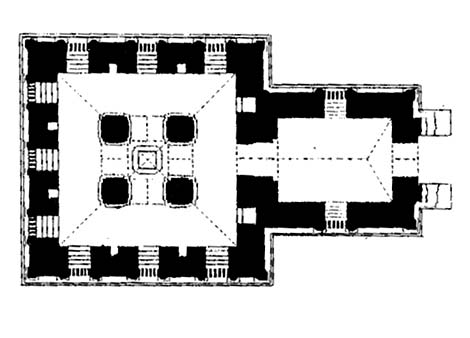| Type of monument |
: Type III Temple (Kundaung Pauk Gu) |
| Location |
: Close behind Manuha |
| Region |
: Myinkaba |
| Built by |
: King Manuha's grand-nephew, Prince Naga Thaman |
| Date |
: 11th Century |
| Monument Number |
: 1239 |
Close behind the Manuha Pagoda, there is a shrine mostly known as
"Nanpaya". It is said to have been used as Manuha's prison although
there is little evidence supporting the legend.
There is also another story saying that the shrine was originally
Hindu. Supposedly his captors thought that using it as a prison
would be easier than converting it to a Buddhist temple. But also
some say that the temple was built by Manuha's grand-nephew known as
Prince Naga Thaman in the
late 11th century.
SANDSTONE CARVINGS INSIDE THE TEMPLE
It is made of sandstone masonry block facings integrated over a
brick core. It is particularly fine. It consists of perforated stone
windows which are typical of earlier Bagan architecture. Nanpaya is
in fact Bagan's first "gu-style" (cave) shrine. It also features
interesting arches over the windows.
MARVELOUS STUCCOS ON THE RIM OF THE
TEMPLE
In the central sanctuary the four stone pillars have finely carved
sandstone bas-relief figures of four-faced Brahma. The creator deity
is holding lotus flowers, thought to be offerings to a free-standing
Buddha image once situated in the shrine's centre, a theory that
dispels the idea that this was ever a Hindu shrine. The sides of the
pillars bear ogre-like heads with open mouths streaming with
flowers. According to the Myanmar legend, the face of the orge
represents the guardian and eats flowers instead of meat.
LAYOUT PLAN
